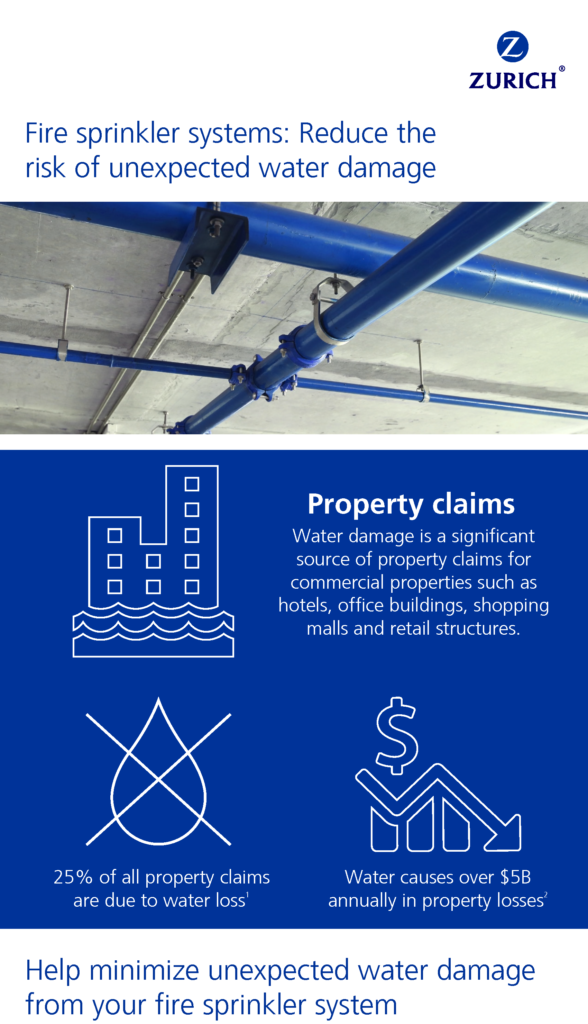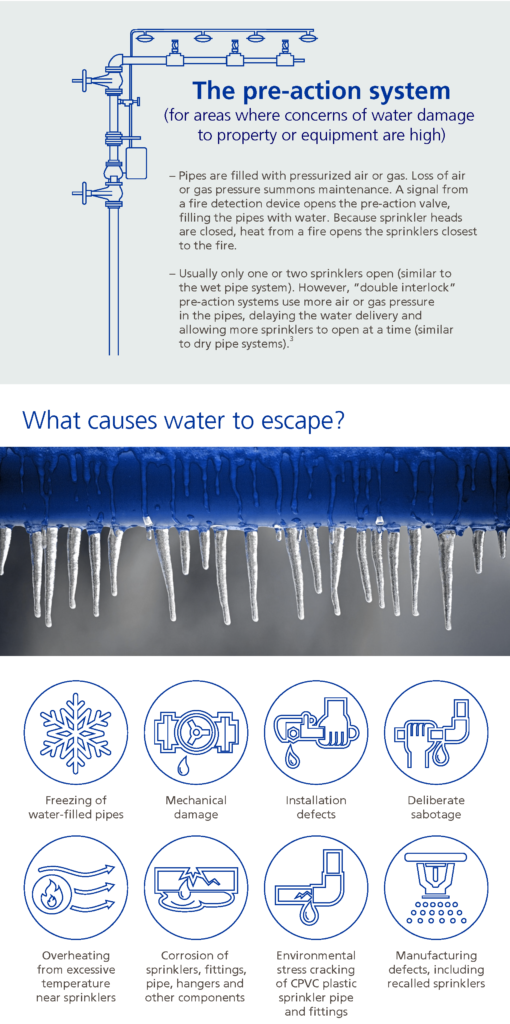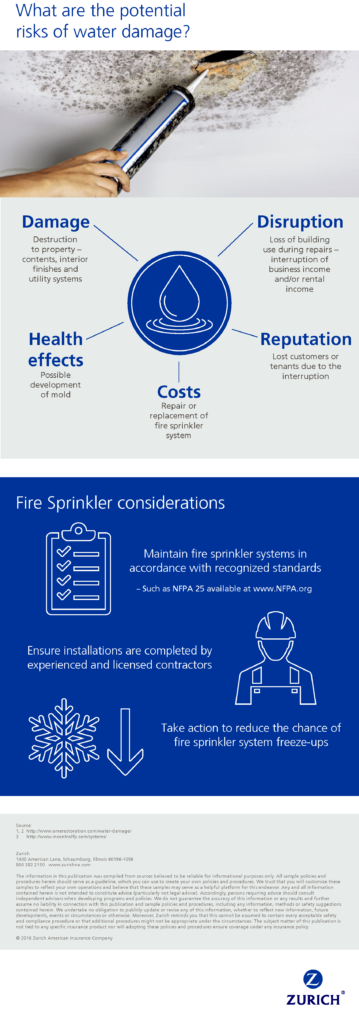
Help minimize unexpected water damage from fire sprinklers
Fire sprinkler systems are a crucial part of your loss prevention in the event of a fire – that’s a given. But what happens when your sprinkler system goes awry and leaks, or worse – goes off when it’s not needed? Here are steps you can take to minimize water damage from fire sprinklers.
Some 25 percent of all property claims are due to water loss; water causes over $5 billion annually in property losses. How can you minimize unexpected water damage from fire sprinklers? With inspection, testing and maintenance.
As we reported in an earlier post, if a freeze-up occurs in a fire protection system, it’s not so easy to spot. Because water expands when it freezes, it causes additional strain on pipes that can cause fractures or breaks in pipes, valves and fittings. When the water thaws, it escapes from fissures or other forced openings, causing property damage, business interruption and unhappy customers. In tribal risk management, the best defense is a great offense. Take steps now to prevent freezing and bursting pipes. Read more at Tribal Risk Management: Winter Loss Control Tips.
Fire sprinkler options
Four primary types of fire sprinkler systems are available. Choosing the appropriate one for your building and usage can help alleviate potential water damage, says Zurich.
- Wet pipe system. The most commonly used option, where pipes are filled with water. Heat from a fire opens the sprinklers closest to the fire. Usually only one or two sprinklers open.
- Dry pipe system. A smart choice for areas subject to freezing temperatures. Pipes are filled with pressurized air or gas used to hold water back in a heated space. Heat from a fire opens the sprinklers closest to the fire, air escapes and the dry pipe valve opens to allow water flow.
- Deluge system. This is the best option for high-hazard environments vulnerable to fast-spreading fires. Pipes are not filled with water or gas; rather, all sprinklers are open. A signal from a fire detection device opens the deluge valve. Water will flow from all sprinklers.
- Pre-action system. This is a good choice when concerns of water damage to property or equipment are high. Similar to a dry pipe system, here pipes are filled with pressurized air or gas. A signal from a fire detection device opens the pre-action valve, filling the pipes with water. Sprinkler heads are closed, but heat from a fire opens the sprinklers closest to the fire. Usually only one or two sprinklers open (similar to a wet pipe system). However, these “double interlock” pre-action systems use more air or gas pressure in the pipes, delaying the water delivery while allowing more sprinklers to open at a time (similar to dry pipe systems).
Related: Protect boilers in cold weather
What causes water leaks (or worse)?
- Frozen water-filled pipes
- Mechanical damage
- Installation defects
- Deliberate sabotage
- Overheating from excessive temperature near sprinklers
- Corrosion of sprinklers, fittings and other components
- Stress cracking of plastic sprinkler pipe and fittings
- Manufacturing defects, including recalled sprinklers
Related: The hard, cold facts of winter loss prevention
How you can minimize unexpected water damage from fire sprinklers
- Maintain fire sprinklers in accordance with recognized standards.
- Check building low temperature and sprinkler system air pressure supervisory devices.
- Non-freeze fire protection systems: Check air sources, air pressure levels, antifreeze solution and low point drains.
- Wherever sprinkler piping is installed, such as in attics, ceiling spaces and stairwells, be sure that adequate heat is provided; install thermometers or remote-reading thermometers to help simplify ongoing inspections throughout winter.
- Check your fire protection system’s air sources, air pressure levels, low point drains, and antifreeze solution in accordance with NFPA 25.
- Ensure installations are completed by experienced and licensed contractors.
- Examine your plumbing’s insulating systems (that coverings are intact) and heat trace systems.
- Check building low temperature and sprinkler system air pressure supervisory devices in accordance with NFPA 25 and NFPA 72.
- If you have areas that are difficult to heat, consider replacing wet pipe sprinklers with non-freeze systems.
- Take action to reduce the chance of fire sprinkler system freeze-ups.
View Zurich’s infographic, Fire sprinkler systems: Reduce the risk of unexpected water damage, for more tips below.




